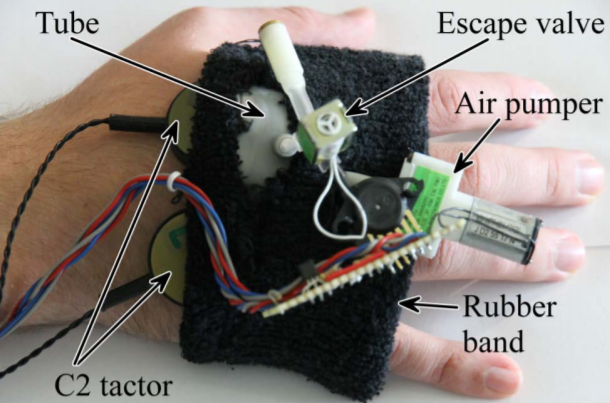Reach out and touch me: effects of four distinct haptic technologies on affective touch in virtual reality
PubDate: October 2016
Teams: Aalto University
Writers: Imtiaj Ahmed;Ville Harjunen;Giulio Jacucci;Eve Hoggan;Niklas Ravaja;Michiel M. Spapé

Abstract
Virtual reality presents an extraordinary platform for multimodal communication. Haptic technologies have been shown to provide an important contribution to this by facilitating co-presence and allowing affective communication. However, the findings of the affective influences rely on studies that have used myriad different types of haptic technology, making it likely that some forms of tactile feedback are more efficient in communicating emotions than others. To find out whether this is true and which haptic technologies are most effective, we measured user experience during a communication scenario featuring an affective agent and interpersonal touch in virtual reality. Interpersonal touch was simulated using two types of vibrotactile actuators and two types of force feedback mechanisms. Self-reports of subjective experience of the agent’s touch and emotions were obtained. The results revealed that, regardless of the agent’s expression, force feedback actuators were rated as more natural and resulted in greater emotional interdependence and a stronger sense of co-presence than vibrotactile touch.

